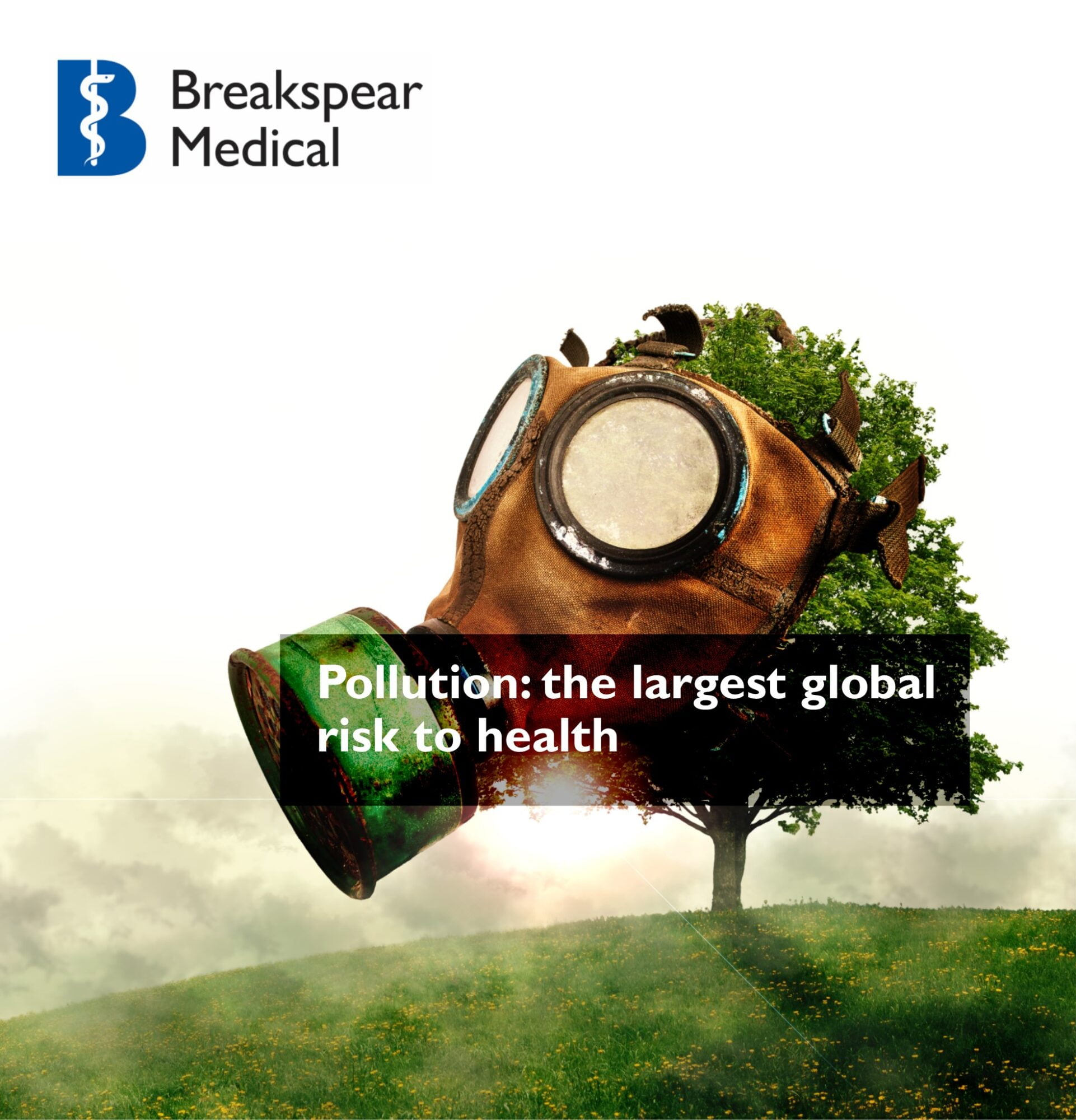In today's world, we're surrounded by chemicals & pollutants that our ancestors never had to…

Pollution: the largest global risk to health
Your health is Breakspear Medical’s top priority and this blog is to raise awareness about pollution, which, according to a Lancet Commission Planetary Health report, is the largest environmental cause of disease & premature death in the world today.
Edited excerpt from Breakspear Medical Bulletin Issue 44:
Commission findings on pollution & health
According to the Lancet Commission report, diseases caused by pollution were responsible for an estimated nine million premature deaths in 2015, which is 16% of all deaths worldwide. This equates to three times more deaths than from AIDS, tuberculosis and malaria combined.
The report also stated that chemical pollution is a great and growing global problem and the impact on human health is currently poorly defined. More than 140,000 new chemicals and pesticides have been synthesised since 1950 and fewer than half of those chemicals have undergone any testing for safety and toxicity. These new chemicals contain developmental neurotoxicants, endocrine disruptors,
chemical herbicides and engineered nanomaterials.
Developmental neurotoxicants: toxic chemicals which can cause brain development deficits. The
recent increase in conditions such as attention-deficit hyperactivity disorder (ADHD), autism and
dyslexia have been linked to exposure to these harmful chemicals.
Endocrine disruptors: primarily manmade chemicals that interfere with hormones, which can lead to birth defects, developmental disorders, cancerous tumours and sexual development disruptions.
Engineered nanomaterials: chemical substances or materials that are manufactured and used at a very small scale. While the numbers of new nanomaterials increase week by week, the potentially harmful environmental impact and toxicity are not yet fully understood, particularly regarding biodegradation.
There are historical examples of chemicals which were developed to achieve a specific purpose and were so
effective that they were being used around the world within a few years. However, then the health issues
surfaced, a process of evaluation was undertaken, and then it was determined that the chemical was harmful to not only human health but the entire planet’s. Examples of this are asbestos and DDT, which still exist today.
The Lancet Planetary Health issued a progress update on their website in 2022. It stated:
In 2019, pollution was responsible for approximately 9·0 million premature deaths. Air pollution (both household and ambient air pollution) remains responsible for the greatest number of deaths, causing 6·7 million deaths in 2019. Water pollution was responsible for 1·4 million premature deaths. Lead was responsible 900 000 premature deaths. Toxic occupational hazards, excluding workplace fatalities due to safety hazards, were responsible for 870 000 deaths. The total effects of pollution on health would undoubtedly be larger if more comprehensive health data could be generated, especially if all pathways for chemicals in the environment were identified and analysed. (Parvez SM, Jahan F, Brune M-N, et al. Health consequences of exposure to e-waste: an updated systematic review. Lancet Planet Health. 2021; 5: e905-e920)
It is clear that an environmental approach to health is becoming more and more important, with detoxification being fundamental to a longer, healthier life. For over 40 years, Breakspear Medical has been specialising in Environmental Medicine, which looks at how all the factors of one’s lifestyle and environment affect one’s health. Read more about our approach to Environmental Medicine.





